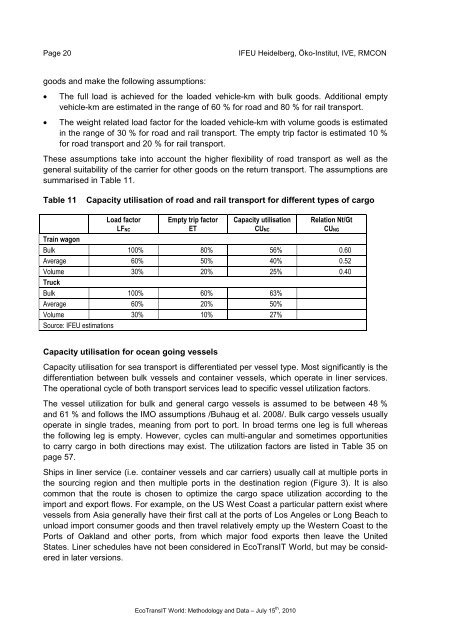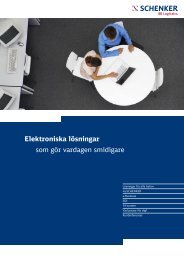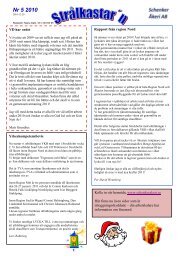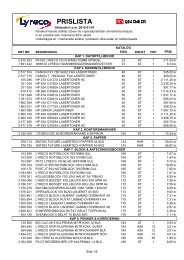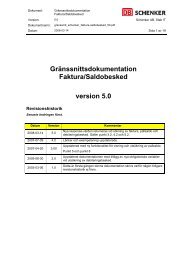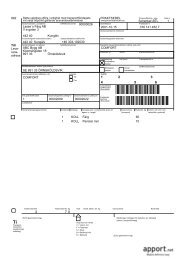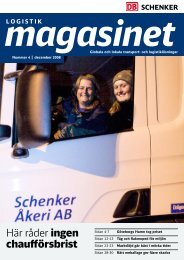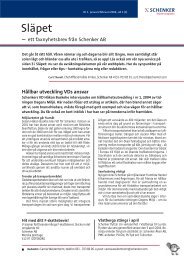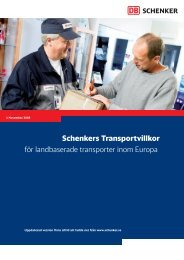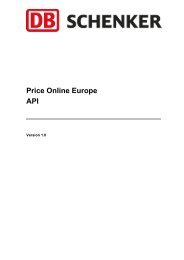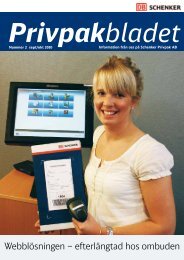Ecological Transport Information Tool for Worldwide ... - Schenker
Ecological Transport Information Tool for Worldwide ... - Schenker
Ecological Transport Information Tool for Worldwide ... - Schenker
Create successful ePaper yourself
Turn your PDF publications into a flip-book with our unique Google optimized e-Paper software.
Page 20<br />
IFEU Heidelberg, Öko-Institut, IVE, RMCON<br />
goods and make the following assumptions:<br />
• The full load is achieved <strong>for</strong> the loaded vehicle-km with bulk goods. Additional empty<br />
vehicle-km are estimated in the range of 60 % <strong>for</strong> road and 80 % <strong>for</strong> rail transport.<br />
• The weight related load factor <strong>for</strong> the loaded vehicle-km with volume goods is estimated<br />
in the range of 30 % <strong>for</strong> road and rail transport. The empty trip factor is estimated 10 %<br />
<strong>for</strong> road transport and 20 % <strong>for</strong> rail transport.<br />
These assumptions take into account the higher flexibility of road transport as well as the<br />
general suitability of the carrier <strong>for</strong> other goods on the return transport. The assumptions are<br />
summarised in Table 11.<br />
Table 11<br />
Capacity utilisation of road and rail transport <strong>for</strong> different types of cargo<br />
Load factor<br />
LFNC<br />
Empty trip factor<br />
ET<br />
Capacity utilisation<br />
CUNC<br />
Relation Nt/Gt<br />
CUNG<br />
Train wagon<br />
Bulk 100% 80% 56% 0.60<br />
Average 60% 50% 40% 0.52<br />
Volume 30% 20% 25% 0.40<br />
Truck<br />
Bulk 100% 60% 63%<br />
Average 60% 20% 50%<br />
Volume 30% 10% 27%<br />
Source: IFEU estimations<br />
Capacity utilisation <strong>for</strong> ocean going vessels<br />
Capacity utilisation <strong>for</strong> sea transport is differentiated per vessel type. Most significantly is the<br />
differentiation between bulk vessels and container vessels, which operate in liner services.<br />
The operational cycle of both transport services lead to specific vessel utilization factors.<br />
The vessel utilization <strong>for</strong> bulk and general cargo vessels is assumed to be between 48 %<br />
and 61 % and follows the IMO assumptions /Buhaug et al. 2008/. Bulk cargo vessels usually<br />
operate in single trades, meaning from port to port. In broad terms one leg is full whereas<br />
the following leg is empty. However, cycles can multi-angular and sometimes opportunities<br />
to carry cargo in both directions may exist. The utilization factors are listed in Table 35 on<br />
page 57.<br />
Ships in liner service (i.e. container vessels and car carriers) usually call at multiple ports in<br />
the sourcing region and then multiple ports in the destination region (Figure 3). It is also<br />
common that the route is chosen to optimize the cargo space utilization according to the<br />
import and export flows. For example, on the US West Coast a particular pattern exist where<br />
vessels from Asia generally have their first call at the ports of Los Angeles or Long Beach to<br />
unload import consumer goods and then travel relatively empty up the Western Coast to the<br />
Ports of Oakland and other ports, from which major food exports then leave the United<br />
States. Liner schedules have not been considered in EcoTransIT World, but may be considered<br />
in later versions.<br />
EcoTransIT World: Methodology and Data – July 15 th , 2010


